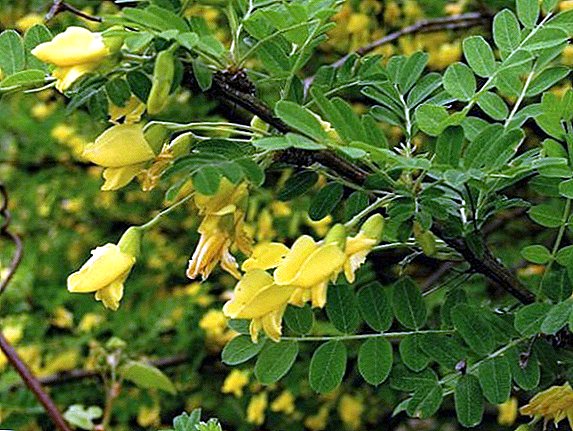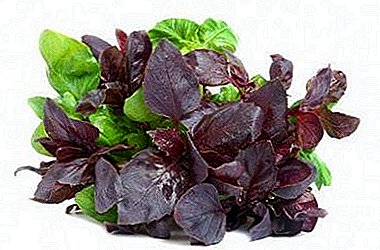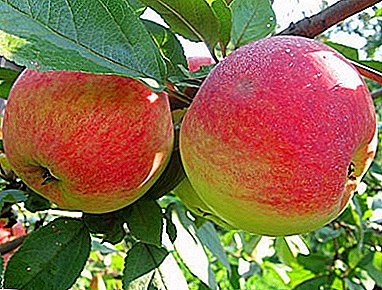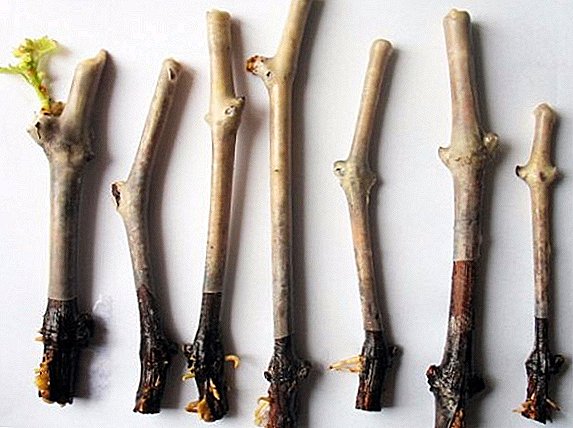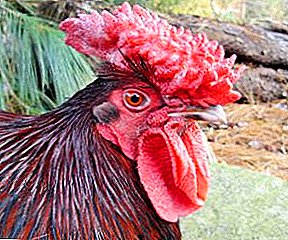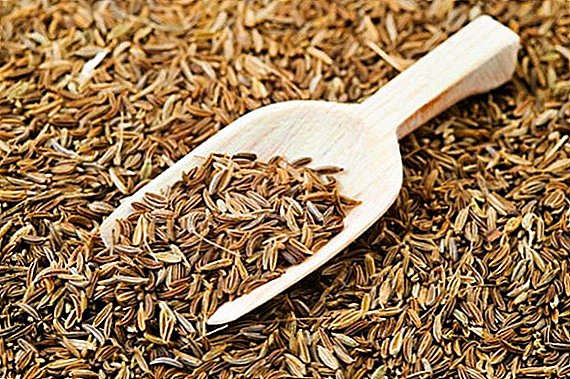 Since ancient times, spices have been used not only to give dishes a brighter and richer taste, but also to treat various ailments. One of such spices is considered Zira, or Cumin, which has a sweet-spicy taste and a pleasant aroma. For what to use cumin and how it is useful, let's consider.
Since ancient times, spices have been used not only to give dishes a brighter and richer taste, but also to treat various ailments. One of such spices is considered Zira, or Cumin, which has a sweet-spicy taste and a pleasant aroma. For what to use cumin and how it is useful, let's consider.
Botanical description
Zira is a one-year, two-year grass crop from the Umbrella family. The homeland of the plant is Central Asia, in countries where the seasoning is called Indian cumin. Zira grows one to two years. The first crop is harvested three months after disembarkation.
The culture has a grayish-green stem with thin-dissected leaves. Seeds have an oblong, spindle-shaped form up to 6-7 mm long, they are distinguished by a fresh aroma and a slightly bitter, burning taste with a perceptible nutty notes. Seed color can vary from mustard to dark brown.
Did you know? Very often, cumin is confused with cumin. Indeed, outwardly the spices are similar, however, cumin has a more delicate aroma, differs in larger and wider seeds. Comparing the first two spices, they never confuse.
Spice in its homeland almost never used independently. It works great in tandem with other spices, such as pepper, turmeric, etc. 
The nutritional value
Cumin contains a large number of active substances that have a beneficial effect on the human body. Its nutritional value per 100 g is presented:
- proteins - 17.81 g;
- fats - 22.27 g;
- carbohydrates - 44.24 g.
Spice is considered an independent vitamin-mineral complex, which consists of:
- B vitamins: responsible for energy production, protein synthesis, normalize the nervous system and the gastrointestinal tract;
- vitamin A: an excellent antioxidant, takes part in oxidative processes, normalizes metabolic processes, promotes skin regeneration, slows down the aging of the body;

- ascorbic acid (vitamin C): strengthens the immune system, increases the protective functions, reduces the risk of colds;
- Vitamin E: rejuvenates the body, improves the supply of cells with oxygen, reduces blood clotting, strengthens blood vessels, normalizes cholesterol levels, prevents cardiovascular failure;
- Vitamin K: responsible for blood clotting, normalizes the state of bone tissue, normalizes blood sugar levels;
- iron: serves as prevention of anemia, promotes growth, prevents fatigue and drowsiness, gives energy and strength;
- calcium: gives firmness to bones, serves for the normal formation of the skeleton, regulates the work of muscles, strengthens blood vessels, promotes the removal of harmful substances;
- potassium: regulates the acid-base balance, improves the physical endurance of the body, improves mental performance, stimulates the production of enzymes;
- magnesium: participates in protein synthesis, improves intestinal motility, strengthens blood vessels, normalizes the nervous system, leads to normal metabolic processes;
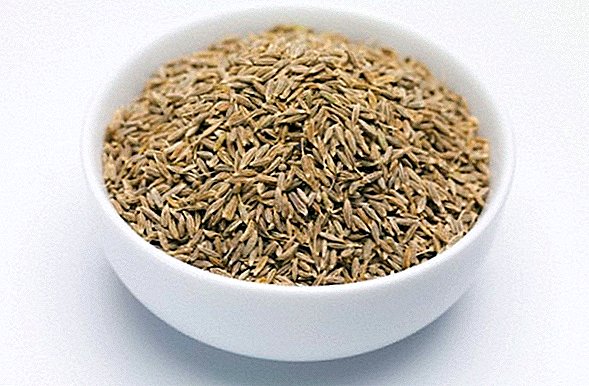
- phosphorus: improves the functioning of the brain system, affects the metabolic processes, helps the absorption of many minerals;
- zinc: improves muscle function, takes part in blood formation processes, has a beneficial effect on brain activity.
In addition, the fruits of spirits contain essential oils, resins and gum, which give it spicy tones and delicate taste. The plant is rich in Omega-3 and Omega-6 fatty acids, palm, stearic, and lauric acids with saturated acids and monounsaturated acids, such as oleic, palmitoleic, and gadoleic.
Calorie content
The spice is sufficiently high in calories; 375 kcal per 100 g of seeds But since it is not used with “spoons”, it is hardly possible to gain extra kilograms from just one spice.
Collection and storage
The collection of seeds of spirits begins after their full maturity, when they turn brown. Cut inflorescences are folded, well dried by the traditional method, then crushed. Raw materials are stored in a dark, dry place, using fabric bags, paper bags or sealed containers.
Cut inflorescences are folded, well dried by the traditional method, then crushed. Raw materials are stored in a dark, dry place, using fabric bags, paper bags or sealed containers.
Green plants are harvested before flowering in the first year of vegetation. Dried herbs in the usual way and stored in an airtight container.
Useful properties of cumin
The high healing properties of cumin are due to its rich vitamin and mineral composition. It has a positive effect on the functioning of the nervous system, strengthens the immune system, accelerates metabolic processes, improves brain activity, helps cleanse the body.
In folk medicine, Zira seeds are used for:
- normalization of the cardiovascular system. The active ingredients of the spice normalize cholesterol levels, prevent the formation of blood clots, serve as prevention of heart attacks and strokes;
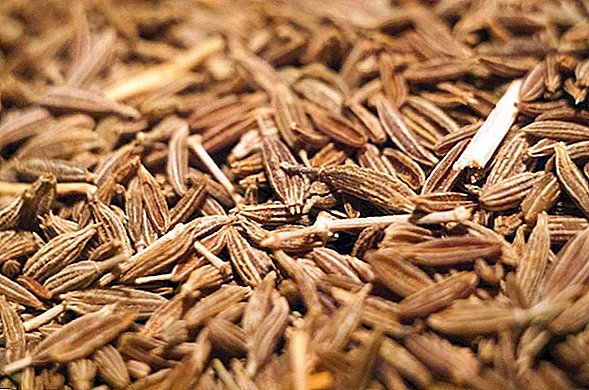
- increased mental activity. Regular consumption of seasoning favorably affects the work of the nervous system, improves memory, activates the flow of oxygen into the brain cells, improves sleep, fights insomnia;
- normal functioning of the digestive tract. Useful substances contained in the seeds, normalize peristalsis, improve metabolic processes, remove harmful elements, slags and toxins, allow you to quickly and efficiently burn excess fat;
The use of raisins, cherries, dried kelp, horseradish, persimmon, spinach, juice from beets and sea buckthorn also helps to eliminate toxins from the body.
- improve vision. It has been proven that zira can improve sharpness and sharpness of vision, normalizes microcirculation, stabilizes accommodation;
- wound healing. Culture seeds have antiseptic, anti-inflammatory properties, heal wounds, reduce redness, and promote rapid tissue regeneration.
Also cumin is widely known as an aphrodisiac, able to normalize the reproductive function of the genital organs, increase potency and libido.
Video: useful properties of cumin
In addition, the use of seasoning helps reduce pain during menstruation, prevents bleeding, stimulates milk production during lactation.
Harm
In some cases, Indian spice can be harmful. It can not be used with individual intolerance, a tendency to allergies.
Cumin abuse can cause:
- blood pressure jumps - headaches, dizziness, nausea occur;
- frequent urging to the toilet, which manifests itself due to the diuretic effects of spices;
- deterioration of the brain - reduced oxygen supply to brain cells, disrupted the nervous system.

Important! It is forbidden to consume damp seeds of spirits, as they can cause severe poisoning. Before including in a diet seasoning, it is necessary to consult with the doctor.It is better to refrain from consuming spice to small children under three years old.
Contraindications
Not devoid of zira and contraindications. Like other foods, if over-consumed, it can trigger allergic reactions and digestive problems.
It is strictly forbidden to use spice when:
- increased acidity of the stomach, as it can provoke heartburn, pain in the intestine, cause constipation or diarrhea;
- ulcers of the stomach and duodenum, aggravation of gastritis. Kumin can cause bloating, weight loss, intoxication of the body, leading to bleeding, vomiting, depression;
- diabetes because it contains components that increase blood sugar levels.

Cumin use
Rich aroma, unusual spicy taste and useful properties allowed to use cumin in various fields: cosmetology, cooking, traditional medicine, etc.
In cooking
In cooking, zira is used as a seasoning for various dishes. It is impossible to imagine Eastern cuisine without this spice. Its bitter-hot taste is especially well in harmony with meat, fish, vegetable side dishes, first courses.
In world culinary, basil, barberry, cress, laurel, marjoram, lemon balm, mint, nasturtium, parsley, rosemary, thyme, fennel, horseradish, tarragon, lavender, sage, chervil, saffron, savory, nutmeg are also used as spices. , dill, cardamom, cloves, cumin, cassia, mustard.
Indian cumin is often added to pastries, cold meats, European cheeses. Cumin seeds facilitate digestion, so it is used in tandem with difficult-to-digest foods, such as legumes.
Important! In order for the cumin to reveal all its aromatic and taste qualities, it is slightly fried before adding.

One of the best dishes that reveal the properties of cumin is considered to be refreshing Egyptian salad, which perfectly harmonizes with meat or fish.
For its preparation you will need the following ingredients:
- feta cheese - 300 g;
- fresh medium-sized cucumber - 1 pc .;
- medium sized onions - 1 pc .;
- lemon - 1 pc .;
- olive oil - 2 tsp;
- greens: parsley, dill - on a small bunch;
- pepper - to taste;
- Mint - 2 tbsp. l .;
- zira - ½ tsp
Salad preparation technology:
- Soften cheese with a fork, add ½ lemon juice, obtained from one lemon, butter, and pepper.
- Onions and cucumber cut into small cubes, mint and greens are crushed.
- All the ingredients are mixed, add spices. Before application, rub the cumin with hands.

One of the best combinations is rice with cumin. Magic seasoning makes cereal unusual, enriches its taste.
For the preparation of spicy rice take:
- rice (steamed or basmati) - 300 g;
- small onion - 1 pc .;
- water or broth - 0.5 liters;
- vegetable oil - 3 tbsp. l .;
- zira - 1 tsp;
- spices: salt and pepper - to taste.
Cooking method:
- In a saucepan with a thick bottom, diced onion are fried in butter.
- After 5-7 minutes, spices are added to the onion: pepper, salt and cumin.
- After one minute, pour in well-washed rice, mix thoroughly, so that each rice is in oil.
- Pour water or broth, bring to a boil, turn down the heat, cover the container with a lid and stew rice until it is ready.
This dish is served with meat or chicken.
Video: recipe for making cumin bread sticks
In medicine
The healing properties of spirits were familiar to healers in ancient times. Today, seasoning treatment is no less relevant, because it helps to improve brain activity, normalize digestion, improve memory, maintain normal cardiovascular and nervous systems, prevent the formation of blood clots, etc.
- To normalize digestion and bloating, use this recipe: 1 tsp. spirits pour 200 ml of hot water, infuse for 30 minutes, filter. Take the infusion before eating 150 ml 3 times a day.
- The following recipe will help improve memory, stimulate the brain, get rid of insomnia: 0.5 tsp. spices are mixed with 250 ml of warm milk. Take a drink daily before bedtime.
When fighting insomnia, they also use medicinal vervain, catnip, geranium, anemone, marigold, red viburnum, oats decoction, irgu, hops, elder and hawthorn.
- In order to improve the functioning of the cardiovascular system, prepare the decoction: 2 tsp. seasoning pour 300 ml of water, put in a water bath and warm the mixture for 20 minutes. Next, the broth insist 40-60 minutes, filter. Consume 3 times a day, 100 ml.
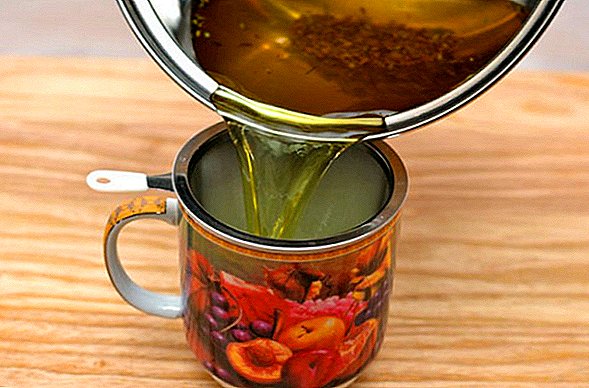
- To enhance lactation in nursing mothers, it is recommended to use this drink: 1 tsp. spice mixed with 2 tsp. sugar, pour 2 cups of hot milk and boil for 5 minutes. Drink decoction 3 times a day, dividing the dosage into three doses.
- A mixture of fried seeds seasoning and salt make a gentle massage of the gums. This allows you to strengthen the teeth and reduce their bleeding.
In cosmetology
For cosmetic purposes, seasoning is used to treat rashes, acne, wounds, eczema, boils, etc. Cumin oil has an antiseptic, antifungal, rejuvenating effect, fights premature aging of the skin. It has a stunning effect on loss and brittle hair.
- To whiten the skin, remove age spots and freckles will help infusion: 1 tsp. seeds pour 250 ml of boiling water, insist 30-40 minutes. Infusion wipe the skin twice a day, morning and evening.

- To strengthen and shine hair, prepare a mask: oil of spirits 1 tsp. mixed with castor and burdock oil in a 1: 1: 1 ratio. Two raw yolks and 2 drops of lemon essential oil are added to the mixture of oils. The tool is rubbed into the roots, and then spread over the entire length of the hair. Stand 30-40 minutes, wash your hair with the traditional method.
Peony dodging, sedge, zizifus, nettle, birch buds, pine essential oil, bitter pepper, black cumin oil and bergamot are also used to strengthen hair.
The mask will help to heal wounds, cure acne and inflammations: 2 drops of oil of spirits are mixed with any base oil (almond, olive), a pinch of ginger and 2 drops of ginger oil are added. The mixture is thoroughly mixed, applied to problem areas, gently rubbed.
Slimming
Despite the fact that zira is a high-calorie food, it is widely used for weight loss. It has a diuretic, slightly laxative effect, stimulates digestion, reduces appetite, removes harmful substances and toxins, allows you to burn fat and a natural way to lose weight.  Cumin tea is used for weight loss. It removes excess fluid, fights against edema, triggers peristalsis, accelerates metabolic processes. To prepare a drink, you need 2 tsp. spices brew in a thermos with green tea and garcinia cambogia. Use tea after a meal or in between meals.
Cumin tea is used for weight loss. It removes excess fluid, fights against edema, triggers peristalsis, accelerates metabolic processes. To prepare a drink, you need 2 tsp. spices brew in a thermos with green tea and garcinia cambogia. Use tea after a meal or in between meals.
Did you know? Regular use of cumin oil instead of the traditional night cream will improve skin condition, reduce wrinkles, eliminate the signs of aging. Oil is applied overnight on clean skin, do not wash off.
Zira - unique in its composition and a wide range of healing properties of the spice used in cooking, folk medicine and cosmetology. It will help to normalize the work of many systems of the body, improve the condition of the skin and hair, give a brighter taste sensations to traditional dishes.
However, it must be remembered that cumin is safe when used in the form of a spice; when used as a therapeutic agent, it is necessary to strictly adhere to the dosage and consult with your doctor. 







